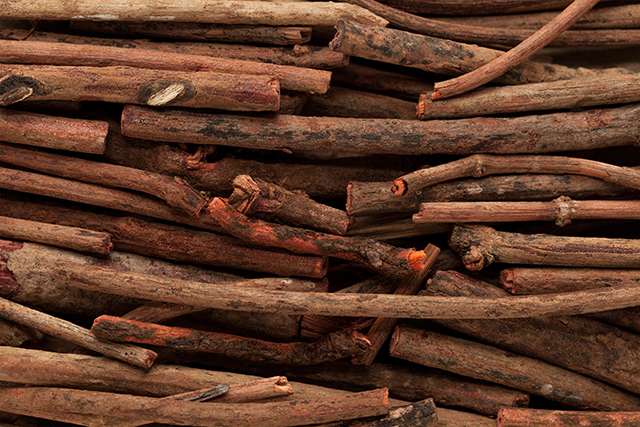
Indian madder (Rubia cordifolia), which is also called manjistha in Sanskrit and majith in Hindi and Gujarathi and which belongs to the coffee family Rubiaceae, is known for treating various diseases as it exhibits antimicrobial, anti-inflammatory, analgesic, antipyretic, and anti-diarrheal properties. It is endemic in tropical Africa, India, Indonesia, and Japan.
Prior to this study, the plant has not been investigated for its anti-mycobacterial properties against virulent tuberculosis strains nor its cytotoxin and antioxidant activities in mononuclear cells and neutrophils. (Related: A plant from the coffee family, Indian madder, found to help protect the lungs against tuberculosis.)
Tuberculosis (TB) is the second highest communicable disease that results in high mortality rates across the globe – next to the human immunodeficiency virus (HIV) and acquired immune deficiency virus (AIDS) – due to the virus Mycobacterium tuberculosis. Incidents of the disease are expected to rise in the coming years due to various forms of multi-drug resistant tuberculosis and co-infection with HIV. As a matter of fact, South African TB/HIV/AIDS co-infections are very high with 73 percent of TB patients co-infected with HIV.
This situation made it necessary for researchers to look for possible uses of medicinal plants as potential mycobacterial agents in South Africa. Plant extracts with the propensity to exhibit high amounts of antioxidants have been shown as carrying bacterial activity against Mycobacterium tuberculosis.
Tuberculosis manifests an inflammatory response in the lungs whereby cellular mediators are released causing oxidative stress. The most essential of the mediators are reactive oxygen species (ROS) and hydrogen peroxide. Too much release of these oxidants can result in harmful inflammatory reactions in the lungs (caseous necrosis) and antioxidant material that scavenge and eliminate ROS.
Testing the medicinal properties of India madder
India madder was tested for anti-mycobacterial activity using a fluorescent microplate assay; the antioxidant activity was tested using the radical scavenging assay, while the cytotoxicity to lymphocytes was measured utilizing the WST-8 assay.
The researchers were able to conclude that Indian madder exhibit anti-mycobacterial, antioxidant, and cytotoxic properties.
“The anti-mycobacterial, cytotoxic, and antioxidant activities of three ethanolic leaf extract sub-fractions of Rubia cordifolia are still preliminary and further laboratory work is warranted to isolate their bioactive elements, elucidate their apoptotic pathways, and screen various drug combination schema in in vitro and animal models of experimental tuberculosis,” the researchers said.
More on Indian madder
Indian madder is a perennial climbing herb which can reach a height of up to 1.5 m. Its evergreen leaves are 5-10 cm long and 2-3 cm broad. Its leaves are oval-shaped yet heart-shaped at the base and are rarely rounded. Its flowers are three to 5 millimeters (mm) across, with five greenish yellow or yellow petals. Its roots can be up to a meter in length and 12 mm thick.
Indian madder is an essential source of red pigment in many areas in Asia, Africa, and Europe. Its roots contain an organic compound called alizarin which gives the plant its red color. Indian madder is used as a colorant, especially for paint that is called Madder lake.
For more articles on other lesser-known herbs and other natural sources of healing, visit Healing.news today.
Sources include:
Please contact us for more information.























